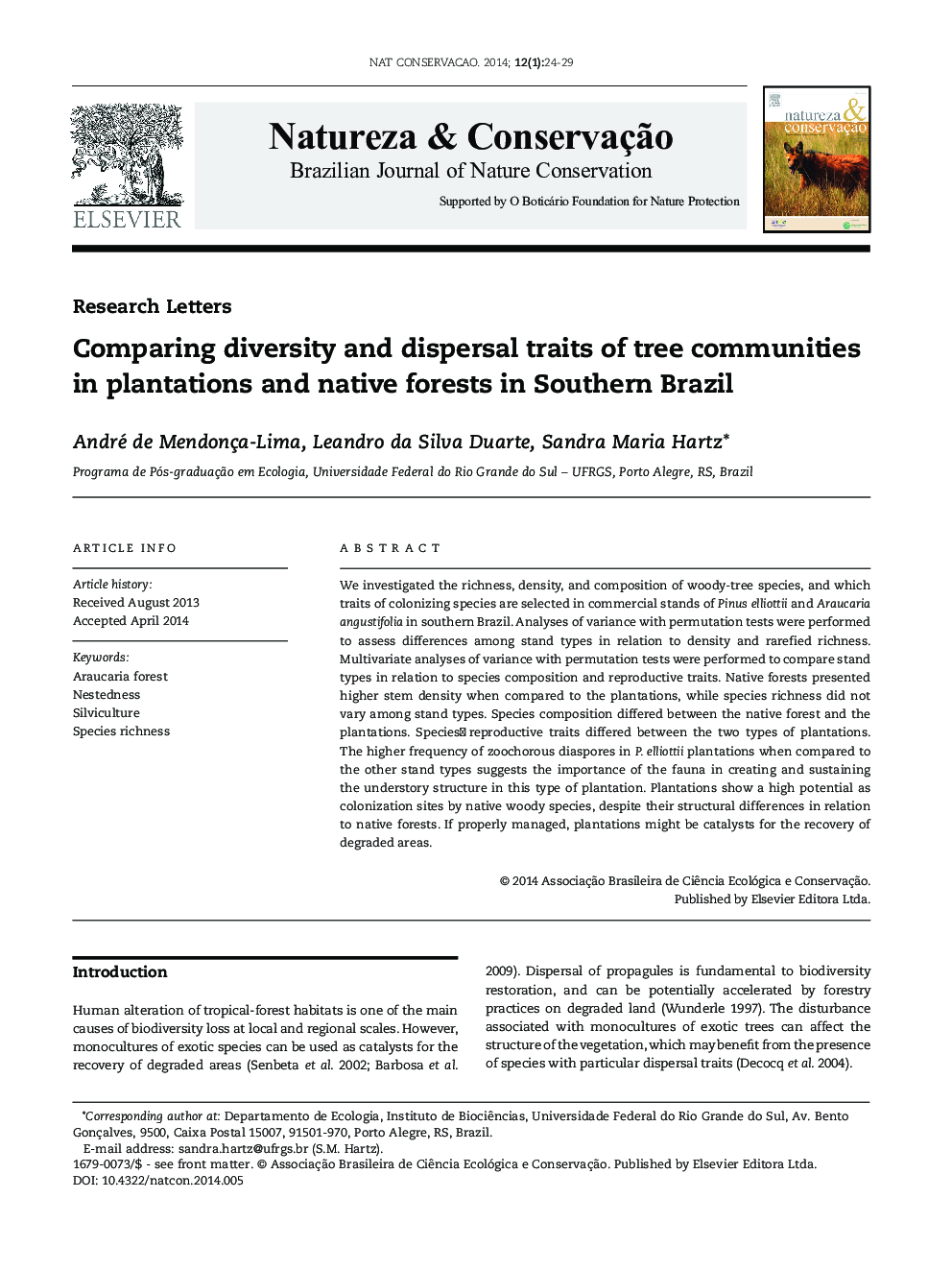| Article ID | Journal | Published Year | Pages | File Type |
|---|---|---|---|---|
| 4400876 | Natureza & Conservação | 2014 | 6 Pages |
ABSTRACTWe investigated the richness, density, and composition of woody-tree species, and which traits of colonizing species are selected in commercial stands of Pinus elliottii and Araucaria angustifolia in southern Brazil. Analyses of variance with permutation tests were performed to assess differences among stand types in relation to density and rarefied richness. Multivariate analyses of variance with permutation tests were performed to compare stand types in relation to species composition and reproductive traits. Native forests presented higher stem density when compared to the plantations, while species richness did not vary among stand types. Species composition differed between the native forest and the plantations. Species' reproductive traits differed between the two types of plantations. The higher frequency of zoochorous diaspores in P. elliottii plantations when compared to the other stand types suggests the importance of the fauna in creating and sustaining the understory structure in this type of plantation. Plantations show a high potential as colonization sites by native woody species, despite their structural differences in relation to native forests. If properly managed, plantations might be catalysts for the recovery of degraded areas.© 2014 Associação Brasileira de Ciência Ecológica e Conservação. Published by Elsevier Editora Ltda.
